Transmission Service Checklist for Optimal Vehicle Performance
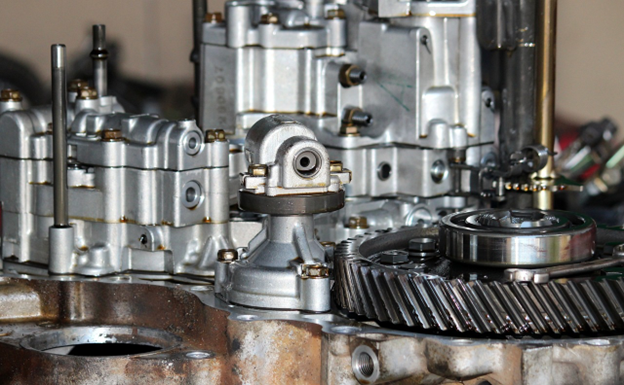
Imagine driving down the highway, everything running smoothly, when suddenly your car hesitates. The gears grind, the engine revs, but the wheels don’t respond as they should. This is often the result of a neglected transmission, a critical component that quietly works behind the scenes to power your drive. Your car’s transmission doesn’t demand much attention—until something goes wrong. It’s a complex system that takes energy from the engine and delivers it to the wheels with precision. Without regular care, this essential part can wear out, leading to frustrating breakdowns and expensive repairs. This guide provides a practical, step-by-step checklist to keep your transmission in top form.
Understanding Transmission Fluid

Transmission fluid is essential for your car’s transmission system. It keeps the moving parts lubricated, reduces friction, and prevents overheating. Without it, the transmission cannot work properly. Over time, the fluid can become dirty or lose its ability to protect the system. This can cause rough gear shifting, overheating, or even damage to the transmission. To check the fluid, park your car on a flat surface. Keep the engine running. Use the dipstick to check the fluid level and condition. The fluid should be bright red and have a sweet smell. If it is dark, dirty, or smells burnt, it needs to be replaced.
Some newer cars have sealed transmission systems. These systems do not allow you to check the fluid yourself. If your car has this type of system, you should take it to a professional mechanic. Regular fluid checks help prevent problems like overheating and keep the transmission working smoothly.
Why Flushing Transmission Fluid is Important
Over time, dirt and particles build up in the transmission fluid. This makes the fluid less effective at protecting the system. A transmission flush removes old, dirty fluid and replaces it with clean fluid. This improves performance and protects the transmission from damage. Most car manufacturers recommend flushing the fluid every 30,000 to 60,000 miles. If you tow heavy loads, drive in hot weather, or often drive in stop-and-go traffic, you may need to flush the fluid more often. These conditions make the transmission work harder, causing the fluid to wear out faster.
A professional flush also cleans hard-to-reach areas like the torque converter and cooling lines. This ensures that no dirty fluid is left behind. Regular flushing keeps the transmission system in good condition and helps avoid costly repairs.
Checking for Transmission Leaks
A transmission fluid leak is often the first sign of trouble. Transmission fluid does not burn off like engine oil. If the fluid level drops, it usually means there is a leak. To spot a leak, check under your parked car for red or pink stains. Use the dipstick to check the fluid level regularly. A burning smell could also mean fluid is leaking onto hot engine parts. Even a small leak can cause big problems if it is not fixed. Leaks reduce the amount of fluid in the system, which can lead to overheating or gear slippage. Addressing leaks early helps avoid serious damage and costly repairs.
Maintaining the Cooling System
Your car’s cooling system also protects the transmission. It keeps the transmission fluid at the right temperature. Overheated fluid cannot lubricate the system properly, which can cause damage. Check the coolant levels regularly to ensure there are no leaks. Inspect the radiator to make sure it is clean and not damaged. Replace the radiator cap if it is old or worn out. If you often tow heavy loads or drive in hot climates, your transmission is at greater risk of overheating. Installing a transmission cooler can help by keeping the fluid at a safe temperature. This reduces stress on the transmission and prevents breakdowns.
Regular Inspections

Even if your transmission seems fine, regular inspections by a professional are important. Mechanics can find small issues before they become major problems. During an inspection, a mechanic will check the fluid levels, look for leaks, and examine key parts like the torque converter and gears. For example, slipping gears might mean the clutch or bands are wearing out. Catching this early can make repairs quicker and less expensive. Regular inspections also ensure that your transmission is working efficiently. They help extend the life of the system and prevent unexpected breakdowns.
Driving Habits That Protect Your Transmission
The way you drive has a big impact on your transmission’s lifespan. By driving carefully, you can reduce wear and tear and avoid unnecessary damage.
- Avoid Sudden Movements: Do not accelerate or brake suddenly. These actions put extra stress on the transmission. Drive steadily and at a consistent speed.
- Stop Before Changing Gears: Always let the car come to a complete stop before shifting between drive, reverse, or park. Shifting gears while moving can damage the gears and clutches.
- Follow Towing Limits: If you tow loads, check the manual for your car’s towing capacity. Towing more than the limit can cause the transmission to overheat.
These simple habits make a big difference. They help your transmission last longer and reduce the risk of expensive repairs.
Recognizing Warning Signs of Transmission Trouble

Your car often shows warning signs when the transmission is not working properly. Paying attention to these signs can prevent major damage.
- Gear Slippage: The car shifts gears on its own without you doing anything.
- Delayed Shifting: There is a lag when you shift into drive or reverse.
- Unusual Noises: Grinding, whining, or clunking sounds may mean parts are worn out.
- Warning Lights: The transmission or check engine light on your dashboard indicates a problem.
Why Following the Manufacturer’s Guidelines is Important
Every car has unique maintenance needs. These are outlined in the owner’s manual. Following these guidelines is essential to keep your transmission healthy. Most manufacturers recommend replacing the transmission fluid every 30,000 to 60,000 miles. For cars that tow loads or drive in extreme heat, fluid replacement may be needed sooner. Always use the fluid type specified in the manual. Using the wrong type can damage the transmission and reduce its efficiency.
Regular inspections should also be done as recommended in the manual. Mechanics can check for leaks, worn-out parts, and fluid quality. This ensures that your transmission continues to work efficiently. By following the manufacturer’s guidelines, you avoid unnecessary damage and costly repairs. This helps your car perform at its best and ensures the transmission lasts longer.
Reliable Transmission Care at Discount Tires & Auto
Taking care of your car’s transmission is important for its performance and lifespan. Following simple steps like checking the fluid, flushing it regularly, and keeping the cooling system in good condition can prevent major issues. Driving carefully and addressing warning signs early also helps avoid costly repairs. At Discount Tires & Auto, we specialize in helping you maintain your vehicle with expert care. Our trained mechanics can check your transmission fluid, inspect for leaks, and perform professional maintenance. We offer clear advice and quality service to keep your car running smoothly.
Visit us in Kamloops, BC, to get the best transmission and vehicle care. Whether it’s a quick inspection or a full transmission service, we’re here to help. Book your appointment today for a service you can trust.
Related Posts
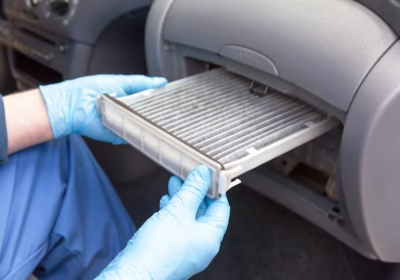
The Importance of Replacing Your Cabin Air Filter
Maintaining your vehicle might seem like a daunting task, but some aspects of it are simpler than you might think. One critical yet often overlooked component to maintain is the cabin air filter. In this blog post, you'll learn why…
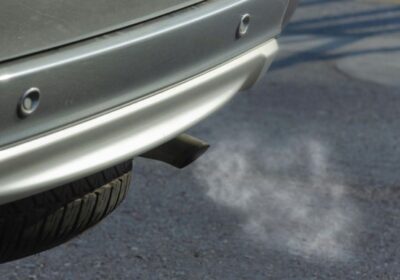
How to Tell if Your Exhaust System Has a Leak
Think your car might be louder than usual lately? Noticing strange smells or poor fuel economy? These could be signs that your exhaust system leaks, and ignoring it can lead to bigger problems down the road. Knowing how to spot…
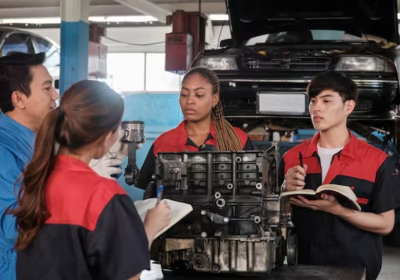
5 Reasons Your Check Engine Light Might Be On
There’s nothing quite as unsettling as driving down the road, minding your own business, and suddenly spotting that dreaded orange glow on your dashboard—the check engine light. Is it a minor glitch or the sign of a serious problem? That…
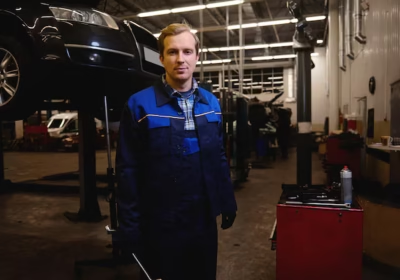
How to Spot a Brake Problem Before It Becomes Dangerous
When you're cruising through Kamloops—whether it’s a scenic drive along the Thompson River or just running errands downtown—the last thing you want is a brake problem sneaking up on you. Brakes are your vehicle’s most important safety system, and even…

The Real Cost of Skipping Routine Oil Changes
Oil changes might seem like one of those “maybe later” car maintenance tasks, but putting them off can come at a much steeper price than you think. At first glance, it might feel like you're saving money by skipping an…

How to Create a Custom Maintenance Schedule for Your Driving Habits
What if your car could tell you exactly when it needed service, not just based on a sticker or a guess, but on how and where you actually drive?Most of us rely on factory-recommended service intervals or wait until something…

Common Headlight Problems in and How Restoration Can Help
Whether you’re commuting through the heart of Kamloops or heading out on a road trip through British Columbia’s scenic routes, your headlights are essential to staying safe. They light the way in low visibility, alert other drivers to your presence,…

A Complete Guide to Wheel Alignment Inspections for Car Owners
Wheel alignment is an important part of car maintenance. It helps your car drive smoothly and keeps your tires from wearing out too fast. It also makes sure your car is safe to drive. If your wheels are not aligned…

Pre-Purchase Inspections: Your Essential Checklist
Buying a car is a significant investment, and ensuring you make the right choice requires thorough preparation. Pre-purchase inspections and pre-purchase maintenance are vital steps that can save you from costly mistakes, giving you peace of mind and confidence in…

Expert Tips for Maximizing the Lifespan of Your Auto Air Conditioning System
Keeping your auto air conditioning system in great working condition isn’t just about staying cool, it’s about comfort, efficiency, and saving money in the long run. Whether you’re commuting in Kamloops’ summer heat or taking a scenic road trip, a…

6 Reasons Why You Shouldn’t Skip Your Next Oil Change
Oil changes keep your engine running smoothly and help prevent major problems down the road. Ignoring this maintenance can lead to expensive repairs, reduced fuel efficiency, and even shorten your car’s lifespan. In this blog, we’ll discuss six key reasons…

Expert Tips for Finding a Reliable Coolant Leak Repair Service
Coolant, also known as antifreeze, plays a crucial role in keeping your engine at the right temperature, especially during extreme heat or cold. It circulates through your engine, absorbing heat and preventing it from overheating. Given the risks associated with…

Tire Care: Tips for Prolonging Tire Life and Enhancing Performance
Taking care of your tires is one of the smartest things you can do for your vehicle and your wallet. Tires are crucial for your safety on the road, improving your car’s handling, braking, and fuel efficiency when properly maintained.…


